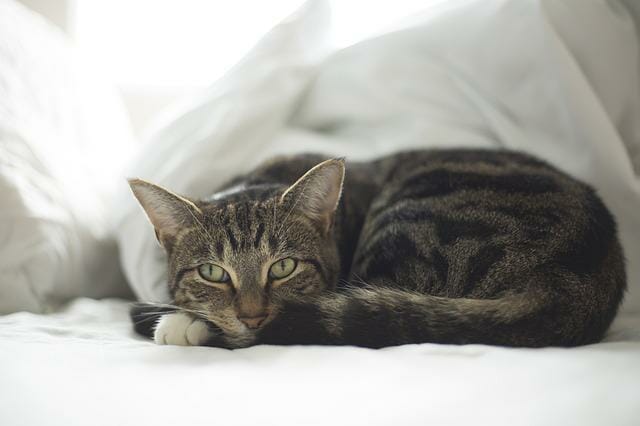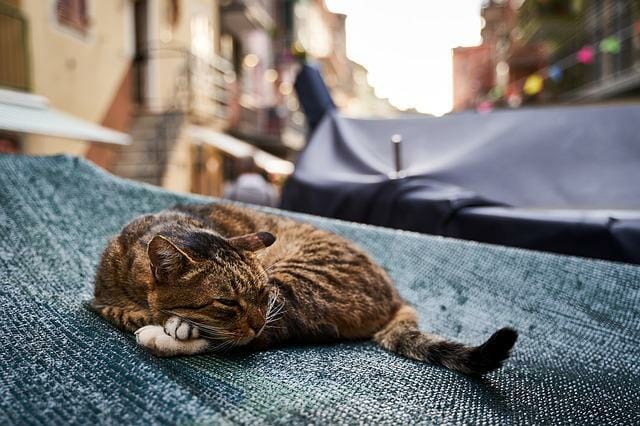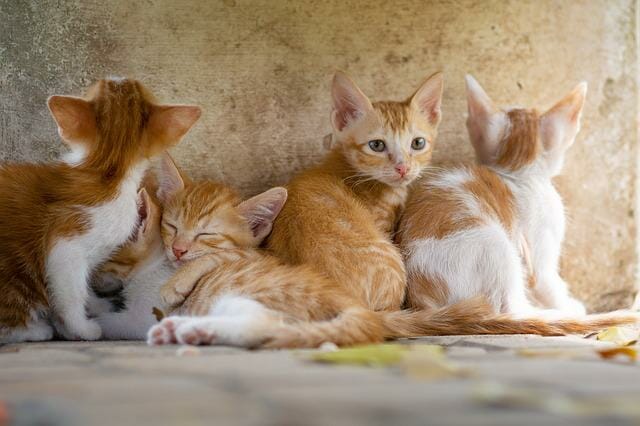How to Know if Your Cat Has Fleas: Causes and Symptoms of Fleas in Cats and How to Deal With It
Fleas cause itching and irritation, which can cause your cat to scratch and bite at their skin, especially around the neck, tail base, and belly. Flea dirt, like small black or brown specks, may be visible on your cat’s skin or fur. Flea dirt is flea feces and is made up of partially digested blood. Fleas are small, dark brown insects about the size of a sesame seed. They may be visible on your cat’s skin or in its fur.


Table of Contents
Causes of Fleas in Cats
Fleas in cats are typically caused by infestations of fleas in the environment, such as in the yard, house, or other areas where cats spend time. Fleas are small, wingless insects that feed on animal blood of, including cats. Fleas can jump from one animal to another or from the environment onto an animal and can quickly reproduce and infest a home or yard.
Fleas are often more prevalent in warm and humid environments and can be more common during certain times of the year. For example, cats that spend time outdoors, come into contact with other animals, or live in multi-pet households are at an increased risk for flea infestations.
Symptoms of Cat Fleas
Scratching and Biting
Scratching and biting are common symptoms of flea infestations in cats. . When fleas bite, they inject saliva into the skin, which can cause itching and irritation. This can lead to scratching and biting, particularly around the neck, tail base, and belly.
Cats may also bite and scratch their skin to remove fleas or flea dirt. Flea dirt is flea feces and is made up of partially digested blood. And looks like small black or brown specks and may be visible on the skin or fur.
Flea Dirt
Flea dirt is the common name for feces, comprising partially digested blood. Flea dirt looks like small black or brown specks and is typically found on the skin or fur of cats and other animals.
To check for flea dirt, part your cat’s fur and look for small, dark specks. You can also use a flea comb, which is a fine-toothed comb designed to remove fleas and flea dirt from the coat. To use a flea comb, run it through your cat’s fur, paying close attention to the neck, tail base, and belly. After each pass, wipe the comb onto a white cloth or paper towel. If fleas or flea dirt are present, you should see small black or brown specks on the cloth or paper towel.
If you find flea dirt on your cat, it’s important to take action to control the flea infestation. This may include using a flea treatment product recommended by your veterinarian, cleaning your home and bedding, and treating other pets in the household. In addition, flea infestations can cause discomfort and health problems for your cat, so it’s important to take steps to prevent and control them.
Hair Loss
According to Kingsdale Animal Hospital, hair loss is a common symptom of flea infestations in cats. Over time, this can lead to hair loss, particularly around the neck, tail, base, and belly.


Hair loss may also occur due to excessive scratching and biting in response to flea infestations. When cats scratch and bite their skin, they can damage the hair follicles and cause hair loss.
If you notice that your cat is experiencing hair loss, it’s important to check for fleas. You can do this by parting your cat’s fur and looking for fleas or flea dirt. If you suspect that your cat has fleas, it’s important to consult with a veterinarian for guidance on the appropriate flea control products and treatment. Treating flea infestations promptly can help prevent further irritation and discomfort for your cat and prevent additional hair loss.
Skin Irritation
Skin irritation is a common symptom of flea infestations in cats. If your cat is experiencing skin irritation, it’s important to check for fleas. You can do this by parting your cat’s fur and looking for fleas or flea dirt. If you suspect that your cat has fleas, it’s important to consult with a veterinarian for guidance on the appropriate flea control products and treatment. Treating flea infestations promptly can help reduce skin irritation and prevent further damage to the skin.
Restlessness
Restlessness can be a symptom of flea infestations in cats. Cats may become restless and agitated in response to this itching and have difficulty sleeping or settling down.
Restlessness may also occur due to discomfort or irritation caused by flea bites and scratches. When cats scratch and bite at their skin, they can cause further irritation and inflammation, exacerbating feelings of restlessness.
Tips to Get Rid of Fleas in Cats


- Use a flea comb: A special comb with fine teeth can help remove adult fleas, flea eggs, and flea dirt from a cat’s fur. You should thoroughly comb your cat’s fur, especially around the head, neck, and tail areas.
- Use flea preventatives: There are many flea preventatives available, including topical treatments, oral medications, and flea collars. These products can help kill fleas and prevent future infestations. It’s important to talk to your veterinarian to determine the best flea preventative for your cat.
- Wash bedding and toys: Fleas can live in bedding, blankets, and toys, so it’s important to wash these items in hot water to kill any fleas and their eggs.
- Vacuum frequently: Vacuuming carpets, furniture, and floors can help remove adult fleas, flea eggs, and flea dirt from the environment. It’s important to empty the vacuum cleaner after each use and dispose of the contents in a sealed bag.
- Treat the environment: Fleas can also live in the environment, so it’s important to treat your home and yard to eliminate any fleas that may be present. This may include using a flea spray, fogger, or professional extermination service.
- Consider natural remedies: Some natural remedies may help repel or kill fleas, such as apple cider vinegar, diatomaceous earth, and essential oils. However, it’s important to use these remedies cautiously and talk to your veterinarian before using them on your cat.
